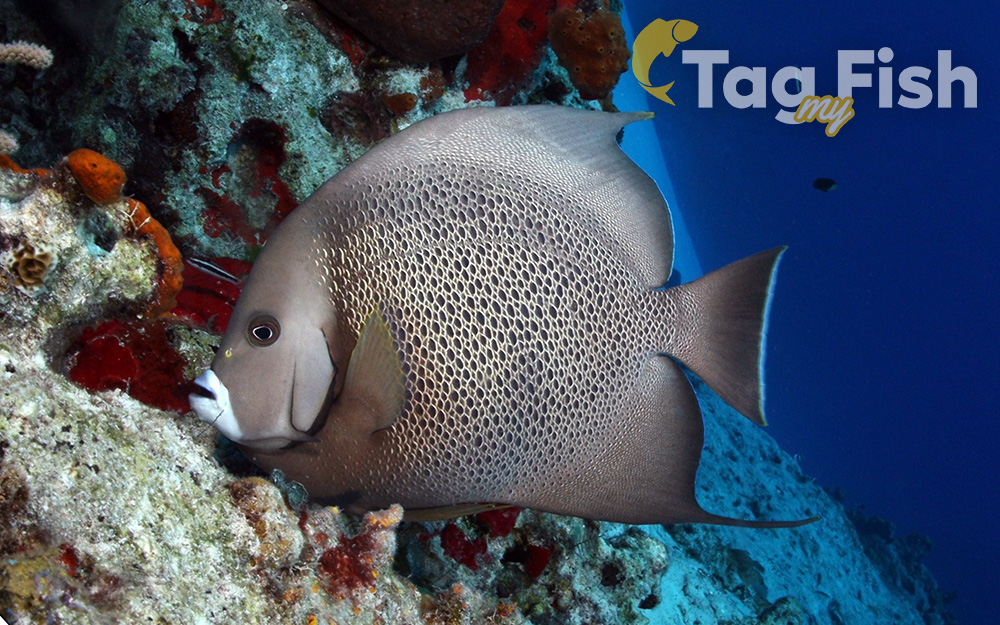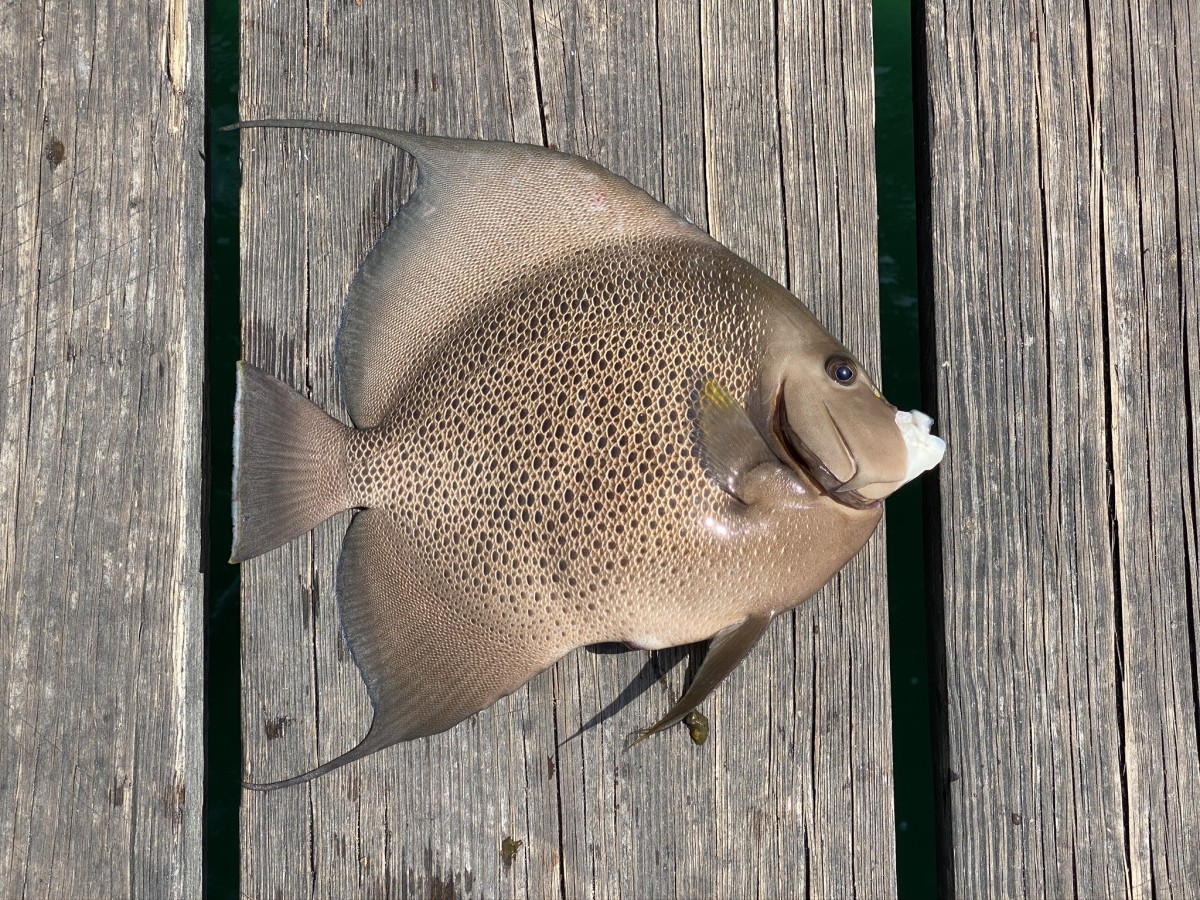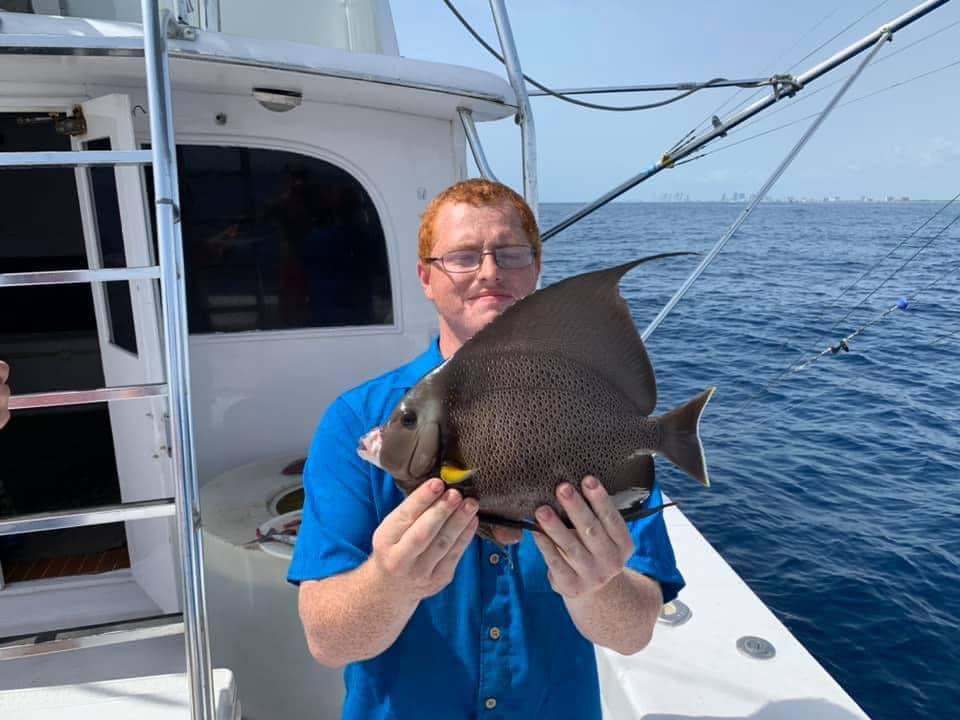Gray angelfish
(Pomacanthus arcuatus)

Classification
General data
The gray angelfish has a disk-shaped, compressed body with a large head and small snout. The snout has a mouth at its tip, which is filled with small, bristle-like teeth. The preoperculum has a sizable spine at its corner and a smooth vertical edge.
The juveniles have a black body marked with five vertical yellow stripes, three on the head and two on the body. The caudal fin has a black blotch which can be elongated or rectangular.
Adults are pale grayish in color and covered in black spots. The head is plain pale gray with a white mouth. The dorsal and anal fins frequently show elongated streamers. The dorsal fin contains 9 spines and 31-33 soft rays, while the anal fin contains 3 spines and 23-25 soft rays.
This species attains a maximum total length of 60 centimetres (24 in).
The gray angelfish is found in the Western Atlantic Ocean from New York to Rio de Janeiro, though it is typically not found north of Florida during the winter. Its range extends to all of the Caribbean Sea and the Gulf of Mexico. It has been introduced to Bermuda from the Bahamas.













